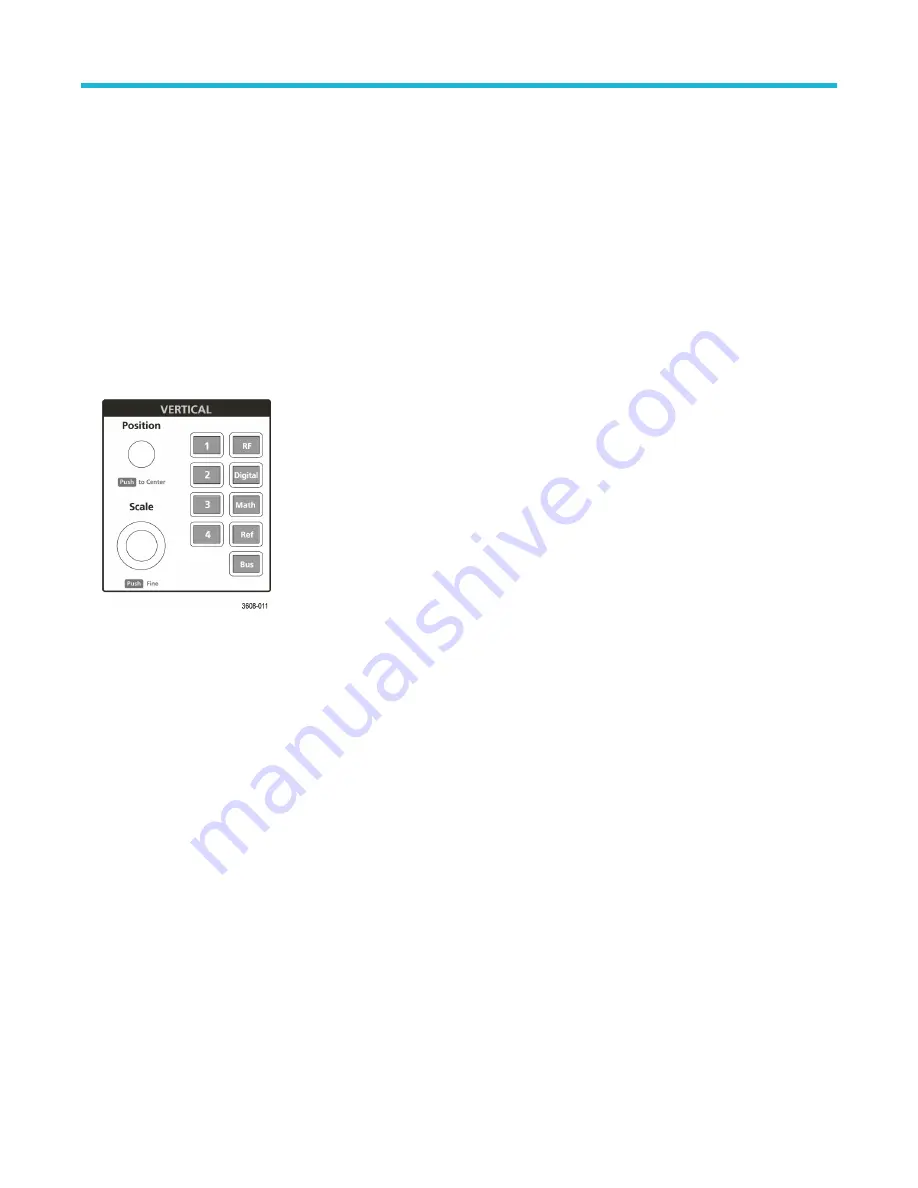
• Force forces a trigger event at a random point in the waveform and captures the acquisition.
• Level sets the amplitude level that the signal must pass through to be considered a valid transition. The color of the Level knob
indicates the trigger source except for dual-level triggers. The Level knob is disabled when the trigger type requires two level
settings or other trigger qualifiers (set from the Trigger configuration menu). Push the knob to set the threshold level to 50% of the
peak-to-peak amplitude range of the signal.
• Slope sets the signal transition direction to detect for a trigger (low to high, high to low, or either direction). Push the button to cycle
through the selections. The Slope button is disabled when the trigger type requires other slope qualifiers (set from the Trigger
configuration menu).
• Mode sets how the instrument behaves in the absence or presence of a trigger event:
•
Auto trigger mode enables the instrument to acquire and display a waveform whether or not a trigger event occurs. If a trigger
event occurs, the instrument displays a stable waveform. If a trigger event does not occur, the instrument forces a trigger event
and acquisition and displays an unstable waveform.
•
Normal trigger mode sets the instrument to acquire and display a waveform only when there is a valid trigger event. If no
trigger occurs, the last waveform record acquired remains on the display. If no last waveform exists, no waveform is displayed.
4. Vertical controls:
• Position moves the selected waveform up or down on the screen. The color of the Position knob indicates which waveform the
knob is controlling. Push the knob to center the waveform handle on the display.
• Scale sets the amplitude units per vertical graticule division of the selected waveform. The scale values are shown on the
waveform badge. The color of the Scale knob indicates which waveform the knob is controlling.
• Channel buttons turn on (display), select, or turn off a channel, as follows:
• If the channel is not displayed, pushing a Channel button turns on that channel in the Waveform view.
• If the channel is on the screen and is not selected, pushing that channel's button selects that channel.
• If the channel is on the screen and is also selected, pushing that channel's button turns that channel off (removes it from
Waveform view).
• The Math button adds or selects a Math waveform on the Waveform view, as follows:
• If no Math waveform exists, pushing the Math button adds a Math waveform to the Waveform view and opens the Math
configuration menu.
• If a Math waveform is displayed but not selected, pushing the button selects the Math waveform.
• If a Math waveform is displayed and selected, pushing the button turns off the Math waveform (removes it from Waveform
view). Push the button again to display the waveform.
• The Ref button adds or selects a Reference (saved) waveform on the Waveform view, as follows:
• If no Reference waveform exists, pushing the Ref button opens the Browse Waveform Files configuration menu. Navigate to
and select a waveform file (*.isf) and tap Recall to load and display the reference waveform.
• If only one Reference waveform is displayed, pushing the button turns off the Reference waveform (removes it from the
Waveform View). Push the button again to display the waveform.
• If two or more Reference waveforms are displayed, pushing the button cycles through selecting each Reference waveform.
• The Bus button adds or selects a bus waveform on the Waveform view, as follows:
Getting acquainted with your instrument
3 Series Mixed Domain Oscilloscope Printable Help
40






























